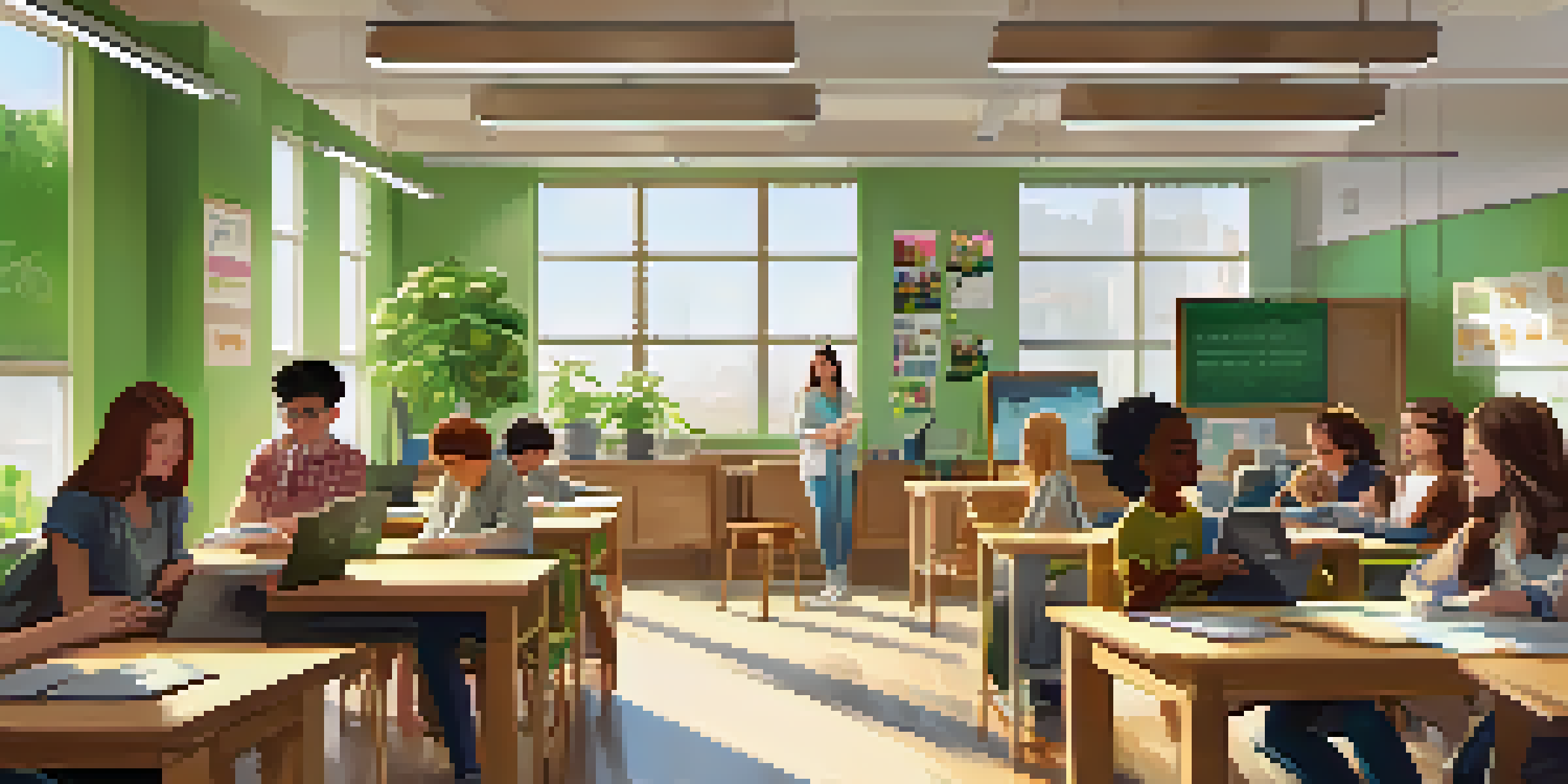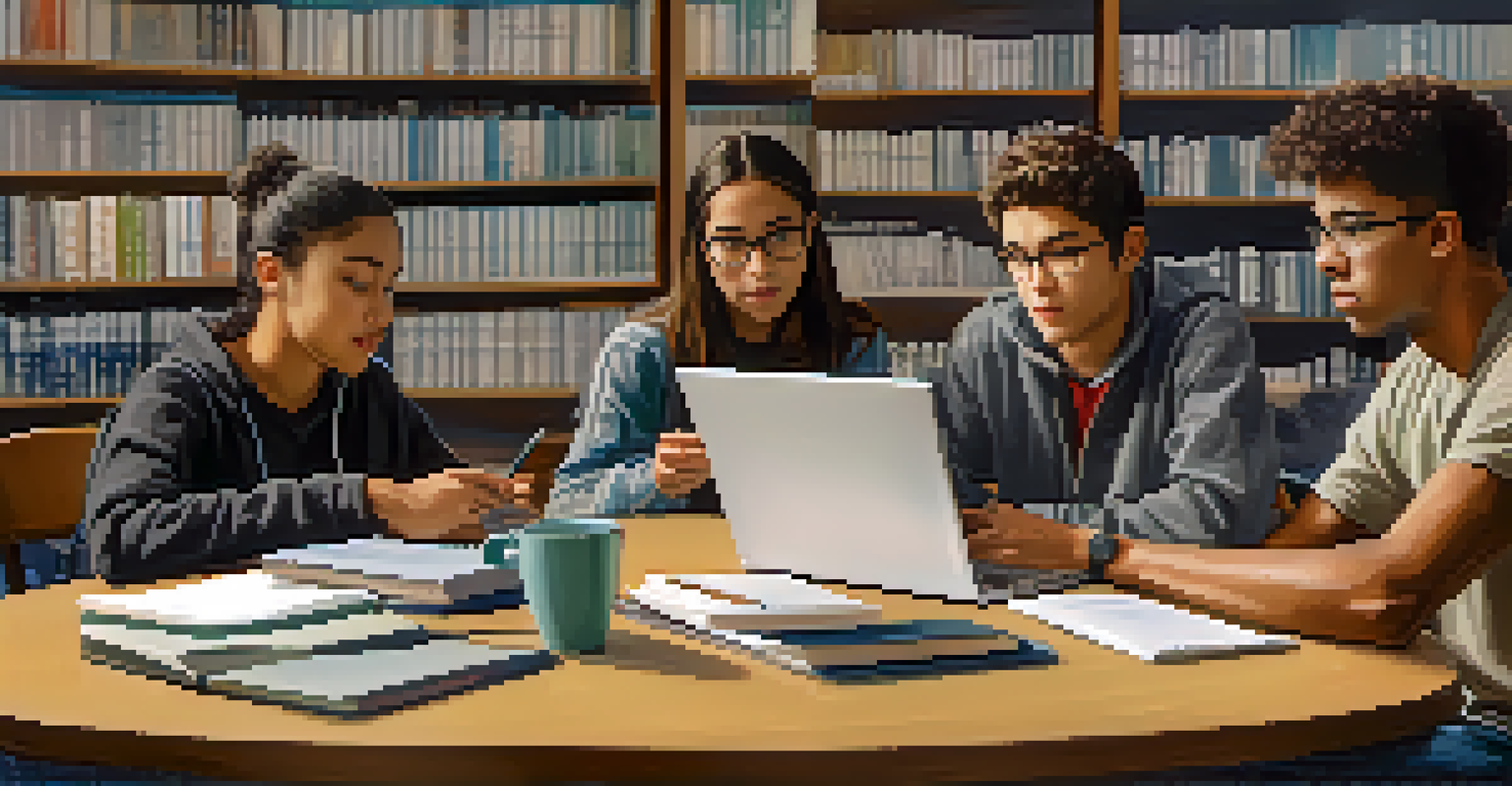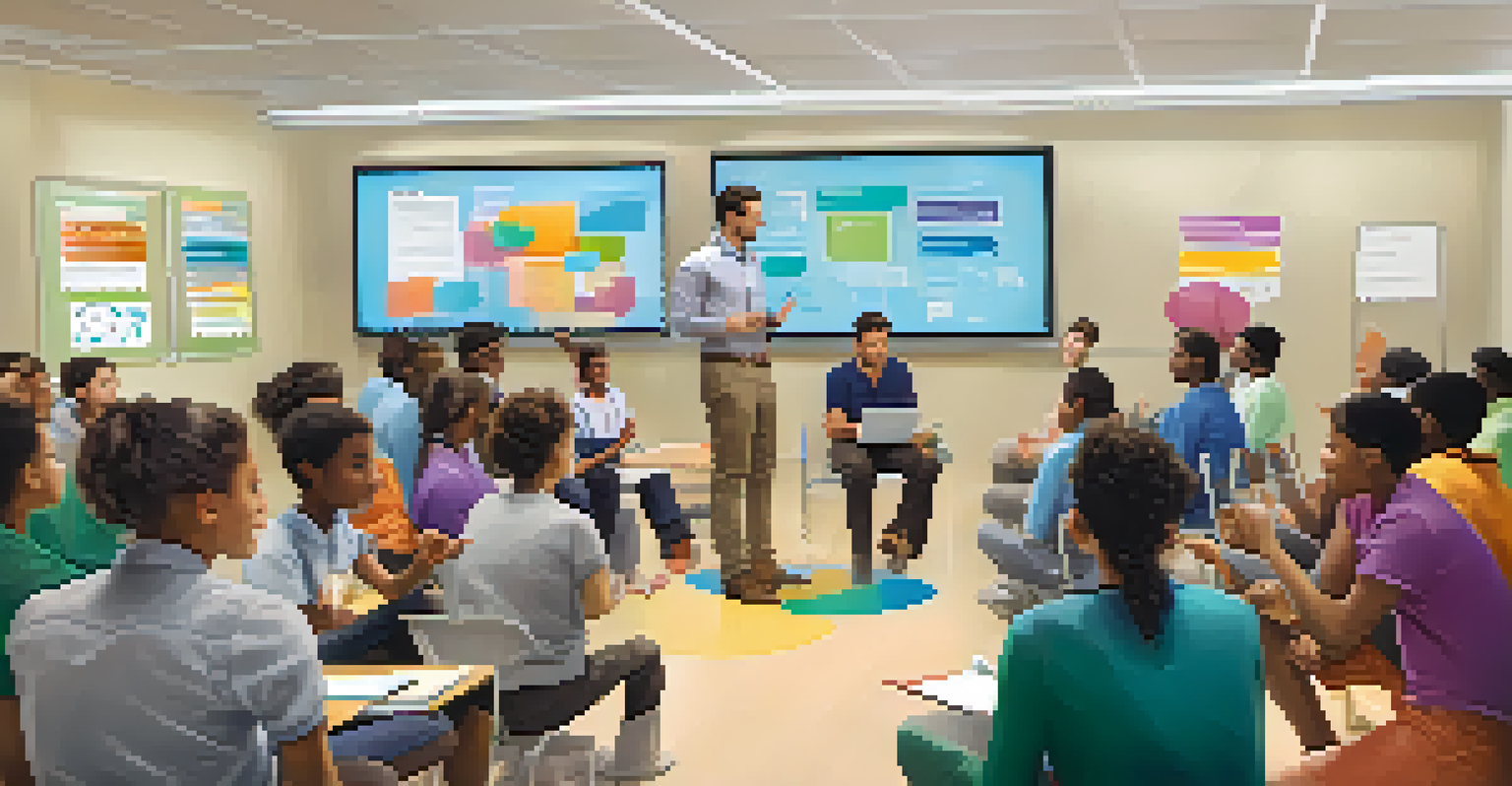The Significance of Peer Feedback in Blended Learning

Understanding Blended Learning and Its Components
Blended learning combines traditional face-to-face teaching with online instruction, creating a flexible learning environment. This approach allows students to engage with course materials at their own pace while still benefiting from direct interaction with instructors and peers. By integrating these two methods, learners can experience a richer educational journey that caters to diverse learning styles and needs.
The greatest gift you can give someone is your time, your attention, your love, and your concern.
In a blended learning setting, technology plays a crucial role in facilitating communication and collaboration among students. Tools such as discussion forums, video conferencing, and collaborative platforms make it easier for learners to connect with one another, regardless of their physical location. This interconnectedness lays the groundwork for effective peer feedback, which can significantly enhance the learning experience.
Ultimately, the combination of online resources and in-person engagement fosters an environment where students can thrive. They not only gain knowledge from their instructors but also learn valuable skills through interaction with their peers. This synergy highlights the importance of understanding the components of blended learning and how they contribute to overall educational success.
The Role of Peer Feedback in Learning
Peer feedback is an essential part of the learning process that involves students reviewing and providing constructive criticism on each other's work. This collaborative approach encourages learners to engage more deeply with the material and gain new perspectives. It also helps them develop critical thinking skills as they assess their peers' strengths and areas for improvement.

When students receive feedback from their peers, they often find it more relatable than comments from instructors. This familiarity can create a more comfortable atmosphere for discussing ideas and challenges, ultimately leading to a more profound understanding of the subject matter. Moreover, learning how to give and receive feedback builds confidence and fosters a sense of community among students.
Blended Learning Enhances Engagement
Combining online and in-person instruction allows students to learn at their own pace while benefiting from direct interactions.
Incorporating peer feedback into the educational process not only enhances individual learning but also promotes teamwork and collaboration. As students work together to provide input and support, they develop essential interpersonal skills that will serve them well in their future careers and personal lives.
Benefits of Peer Feedback in Blended Learning
One of the significant benefits of peer feedback in blended learning is the opportunity for immediate input. Students can share their work with classmates online and receive timely responses, allowing them to make adjustments before submitting final assignments. This ongoing dialogue helps reinforce concepts and encourages learners to take ownership of their progress.
Feedback is the breakfast of champions.
Additionally, peer feedback can foster a growth mindset among students. By learning to view criticism as a valuable tool for improvement, learners become more resilient and open to challenges. This shift in perspective can lead to increased motivation and a desire to engage more actively in their studies.
Moreover, peer feedback encourages a culture of accountability in blended learning environments. When students know that their classmates will be reviewing their work, they may feel more inclined to put forth their best effort. This shared responsibility creates a supportive atmosphere where everyone is invested in each other's success.
Creating a Safe Space for Feedback
For peer feedback to be effective, it's essential to establish a safe and respectful environment. Students should feel comfortable sharing their work and providing constructive criticism without fear of judgment. Setting clear expectations and guidelines can help create this supportive atmosphere, ensuring that everyone understands the importance of respectful communication.
Encouraging positive reinforcement alongside constructive feedback can also contribute to a safe space. When students recognize and celebrate each other's strengths, they build trust and camaraderie within the group. This balance of acknowledgment and improvement helps to foster a more productive feedback process.
Peer Feedback Fosters Growth
Peer feedback encourages deeper engagement with material and helps students develop critical thinking and interpersonal skills.
Instructors play a crucial role in modeling and facilitating this safe environment. By demonstrating how to give and receive feedback effectively, educators can guide students in developing their skills and understanding the value of peer input. This supportive framework ultimately enhances the learning experience for everyone involved.
Strategies for Implementing Peer Feedback
To effectively incorporate peer feedback in blended learning, educators can implement structured activities that guide students through the process. For example, assigning specific criteria for feedback can help students focus their comments on key aspects of their peers' work. This clarity not only streamlines the feedback process but also encourages meaningful discussions.
Another strategy is to use online platforms that facilitate peer review, enabling students to share their work and feedback easily. These digital tools often allow for anonymous submissions, which can reduce anxiety and promote honesty in critiques. This encourages students to engage more openly and provides a valuable opportunity for growth.
Finally, providing opportunities for self-reflection after receiving peer feedback can enhance the learning experience further. Encouraging students to consider how they can apply the feedback to improve their work fosters a deeper understanding of the material and encourages continuous improvement.
Challenges of Peer Feedback in Blended Learning
While peer feedback offers numerous benefits, it also comes with its challenges. One common issue is the potential for uneven participation, where some students may contribute less than others. To address this, educators can implement accountability measures, such as requiring feedback from all group members or providing incentives for active participation.
Additionally, students may struggle with providing constructive feedback, especially if they lack experience in evaluating others' work. Educators can help mitigate this challenge by offering training sessions or resources on effective feedback techniques. By equipping students with the necessary skills, they can become more confident in their ability to critique their peers' work.
Creating Safe Spaces is Essential
Establishing a supportive environment for feedback ensures that students feel comfortable sharing and receiving constructive criticism.
Lastly, there may be apprehension around receiving feedback from classmates, as students might fear negative criticism. Encouraging a growth mindset and emphasizing the importance of learning from feedback can help alleviate these fears, allowing students to view peer input as a valuable opportunity for growth rather than a personal attack.
The Future of Peer Feedback in Education
As blended learning continues to evolve, peer feedback will likely play an increasingly vital role in educational settings. With technology constantly advancing, educators can leverage new tools and platforms to enhance the feedback process further. These innovations can provide more opportunities for collaboration and communication among students, making peer feedback even more impactful.
Moreover, the growing emphasis on social-emotional learning in education highlights the importance of peer feedback in developing interpersonal skills. As students learn to give and receive feedback, they also cultivate empathy, active listening, and effective communication abilities, which are crucial for success in the modern world.

Ultimately, fostering a culture of peer feedback in blended learning environments can significantly enhance the overall educational experience. By prioritizing collaboration and open communication, educators can empower students to take charge of their learning and develop the skills necessary for lifelong success.